Phonemic awareness is essential to learning how to read through phonics, so it’s important to know how to teach phonemic awareness. Today I’m sharing where to start teaching phonemic awareness…and why.
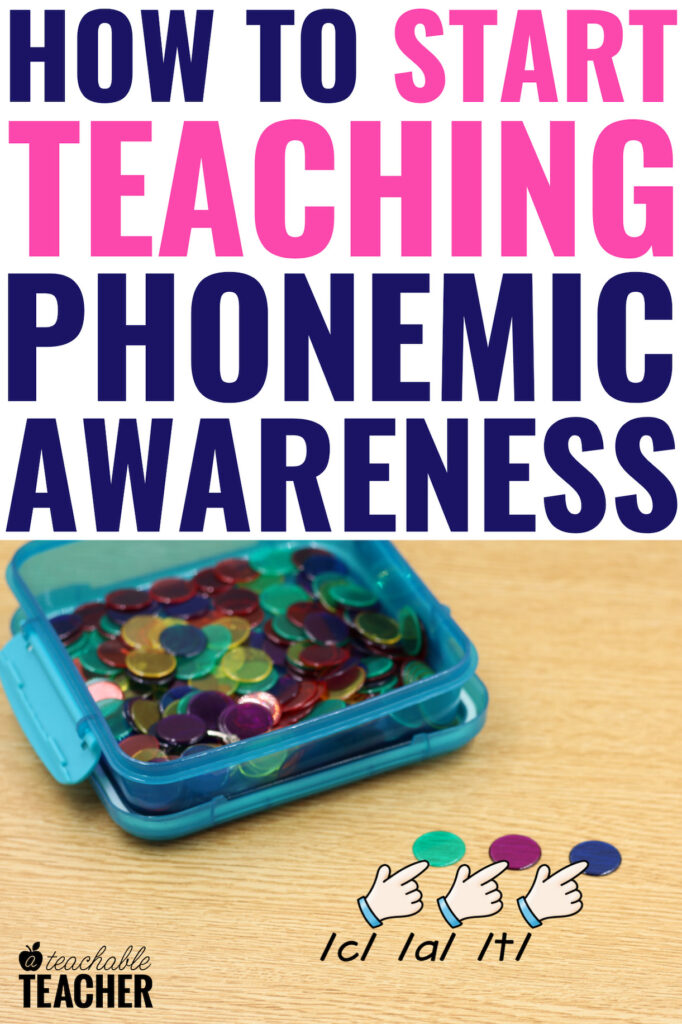
How to Teach Phonemic Awareness: Where to Begin and Why
But before we begin…
Phonological Awareness VS Phonemic Awareness
I know these two terms can be really confusing. To put it shortly, phonological awareness is the house. Phonemic awareness is a room inside of the house.
Now that room (phonemic awareness) is very important.
And we really want to get to it (phonemic awareness).
BUT…
In order to get to that room, we have to walk through the entryway, the living room, the kitchen, and the hallway.
In other words, students will need to build a foundation in phonological awareness, or walk through those rooms in the house, before they can get to phonemic awareness.
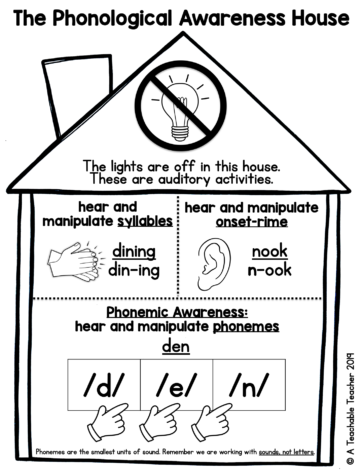
If that doesn’t make sense, I’ve got an entire blog post (and free cheat sheet) where I explain phonological awareness versus phonemic awareness.
Phonics VS Phonemic Awareness
I know all of these words sounds soooo similar. While you need phonemic awareness in order to learn to read through phonics, phonics and phonemic awareness are NOT the same.
Phonics involves sound-spelling correspondence.
Think of phonics as a code. Every letter has a sound (or sounds) that it makes.
(When we read, we decode. Makes sense, right?)
But phonemic awareness is all about sounds in words.
In other words:
Phonemic awareness is done with your ears (listening for sounds)…
and phonics is done with your ears and eyes (sounds and letters).
Now that we know the differences between phonics, phonological awareness, and phonemic awareness, let’s figure out how to teach phonemic awareness!
How to Teach Phonemic Awareness
So far, your students have only ever focused on what words mean.
Now they must start focusing on the sounds they hear in words. This is new to them, so they’ll need lots of practice!
1. Start with Syllables
In order to reach the advanced level of phonemic awareness that we’re striving for, we must begin with phonological awareness. The easiest level of phonological awareness is word play, or the syllable level.
Remember, is the first time that students will focus on the sounds in a word versus the word meaning.
Syllable activities include rhyming (cat, hat, mat), alliterations (Lauren loves lavender lemonades), and breaking down the syllables in a word (ta-ble).
These types of activites can be started with students before Kindergarten.
Have you ever noticed that kids books and nursery rhymes include these types of activities? It’s great! Use all of those activities to your advantage.
Students can work towards building phonemic awareness without even knowing they’re “practicing.”
Here are some free resources for building phonological awareness at the syllable level:
- 5 Fun AND Instructional Videos to Teach Syllables to New Readers
- Six Captivating Songs that Build Phonemic Awareness
- 10 Lively and Engaging Rhyming Books for Kindergarten
- Engaging Videos for Practicing Rhyming in the Classroom
2. Continue with Onset-Rime
Now that students can hear syllables in a word, on the onset-rime level, students will work on breaking apart a syllable.
Because word play (syllable level) often begins at the “preschool” age, it is very common for onset-rime practice to start in early Kindergarten.
What is Onset-Rime?
The onset is any consonant sound that comes before a vowel sound in a syllable. If there is no consonant before a vowel in a word (example: on), then there is no onset.
Rime is different from rhyme. Rime refers to the part of the syllable that includes the vowel sound AND any consonant sounds after the vowel.
I like to think of rime as the ending “chunk” of a word. For example, in cat, the onset is /k/ and the rime is /at/.
Word Families and Onset-Rime
When you practice word families, you are practice onset and rime.
For example: The -at family: cat, bat, sat, mat, rat
The onsets are all different – the sounds of c, b, s, m, r.
The rimes are all the same – at.
3. Finally – The Phoneme Level
Ahh, we’re finally here!
How in the world do we teach phonemic awareness?
Well, once students have gained phonological awareness (the syllable level and the onset-rime level) students can start manipulating phonemes, or individual sounds, inside of a syllable (which is inside of a word).
See why we couldn’t start directly with the phoneme level? We have to help them work their way there!
You’ll notice that the phoneme level often begins with talking about how words begin, or the beginning sound in a word. That is where students are building on their practice of onset-rime!
However, now, students must hear for ALL of the phonemes (sounds) in the word, not just the first one.
Phonemic awareness is often practiced by blending and segmenting sounds. That’s wonderful and amazing and students need that! However…
We cannot neglect the more advanced phonemic awareness concepts, as they’re essential to reading and spelling.
More Examples of Phonemic Level Activities
On top of the traditional blending and segmenting of words, we want to make sure we have students practice:
- adding phonemes
example: The word is ip. Let’s add /l/. What word do we get? (lip)
- deleting phonemes
example: The word is snap. Let’s take away the /s/. What word do we get? (nap)
- substituting phonemes
example: The word is mop. Let’s take away the /o/ and add an /a/. What word do we get? (map)
It’s important to make sure we practice manipulating phonemes with beginning, middle, and ending sounds. We are listening for the phonemes (sounds) in ALL parts of the word, just like they’ll have to do when they read and spell.
And don’t forget – none of this is done with writing on paper.
Building phonemic awareness is an activity that can be “done in the dark.”
Here are some resources for building phonemic awareness:
- 6 Blending and Segmenting Videos that will Have Your Students Moving and Learning
- Beginning Phonemic Awareness Activities
- 10 Inviting Phonemic Awareness Books Your Students Will Love
- 8 Irresistible Games to Teach Phonemic Awareness that Encourage Cooperation and Mastery
- 3 Appealing Apps to Teach Phonemic Awareness Skills that are 100% FREE!
- Educational and Appealing Online Phonemic Awareness Games for EVERY Skill
- Engaging Videos that Build Phonemic Awareness and Keep Your Students Begging for More!
- FREE Phonemic Awareness Worksheets
Summary of How to Teach Phonemic Awareness
In summary, in order to get all the way to mastering phonemic awareness at an advanced level, you must help students work their way down from hearing a whole word to hearing the individual sounds in a word.
First start with word play, then syllable practice, then breaking apart syllables (onset-rime), then break apart the sounds (phonemes) in a syllable.
Remember, phonemic awareness doesn’t just include blending and segmenting sounds. It also includes phoneme manipulation, deletion, and substitution!
Shop this Post
Are you looking for resources to help you teach phonemic awareness to your students? Because phonemic awareness is so critical in helping students learn to read, I’ve created many resources to help you teach phonemic awareness with confidence and ease!

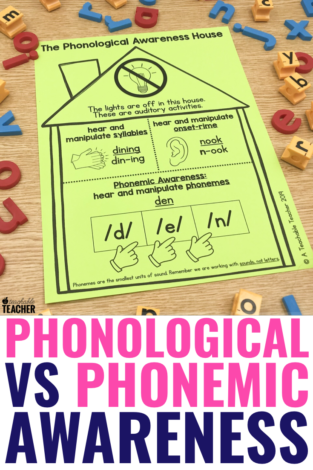
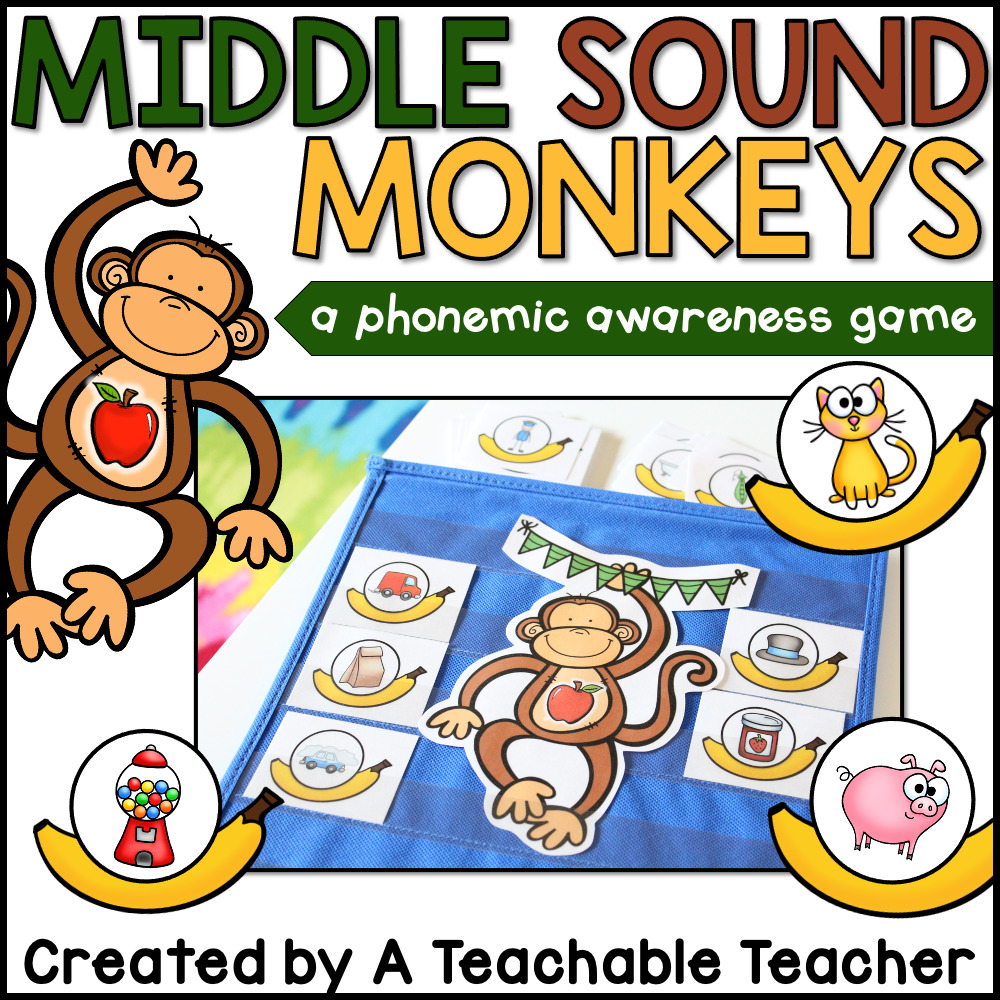
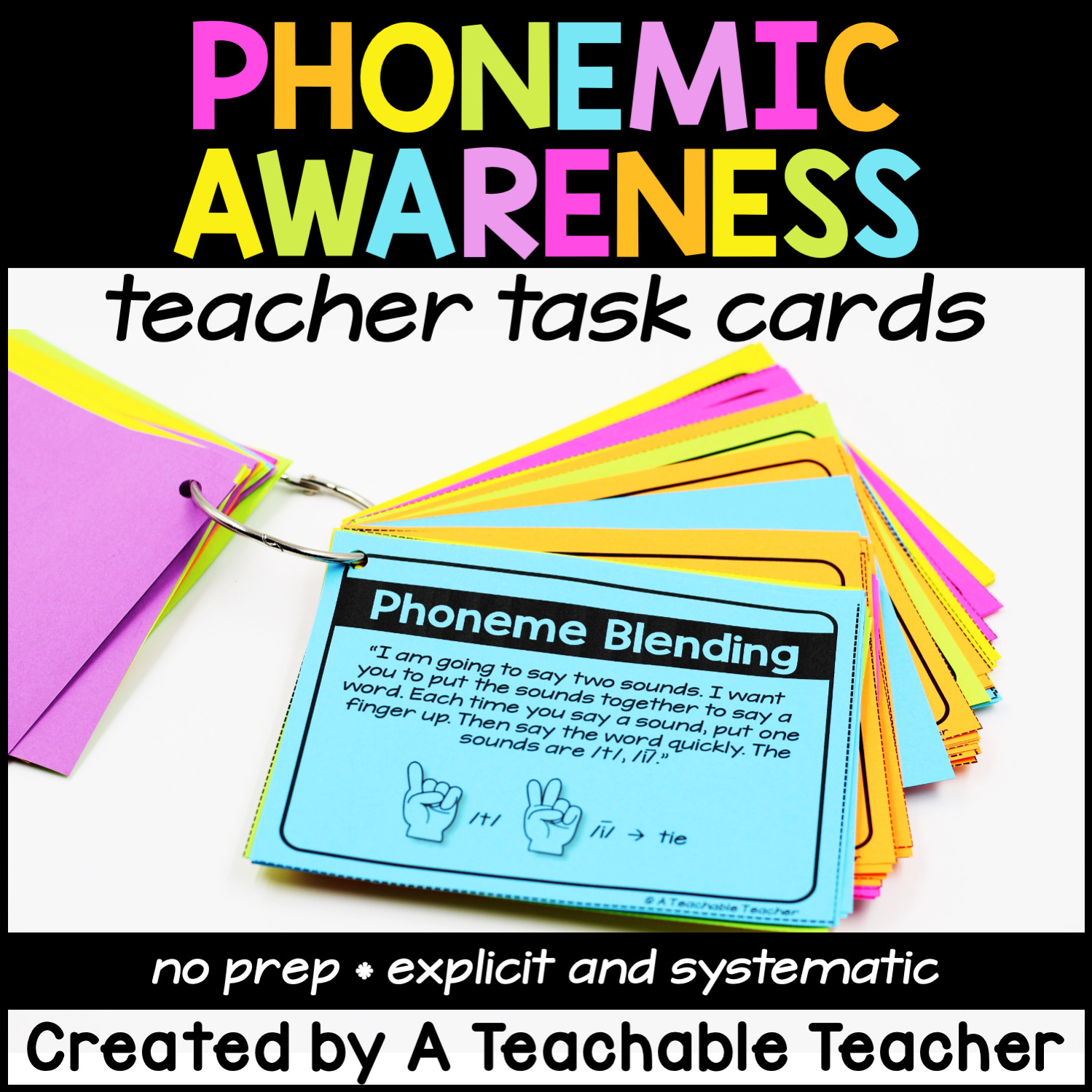
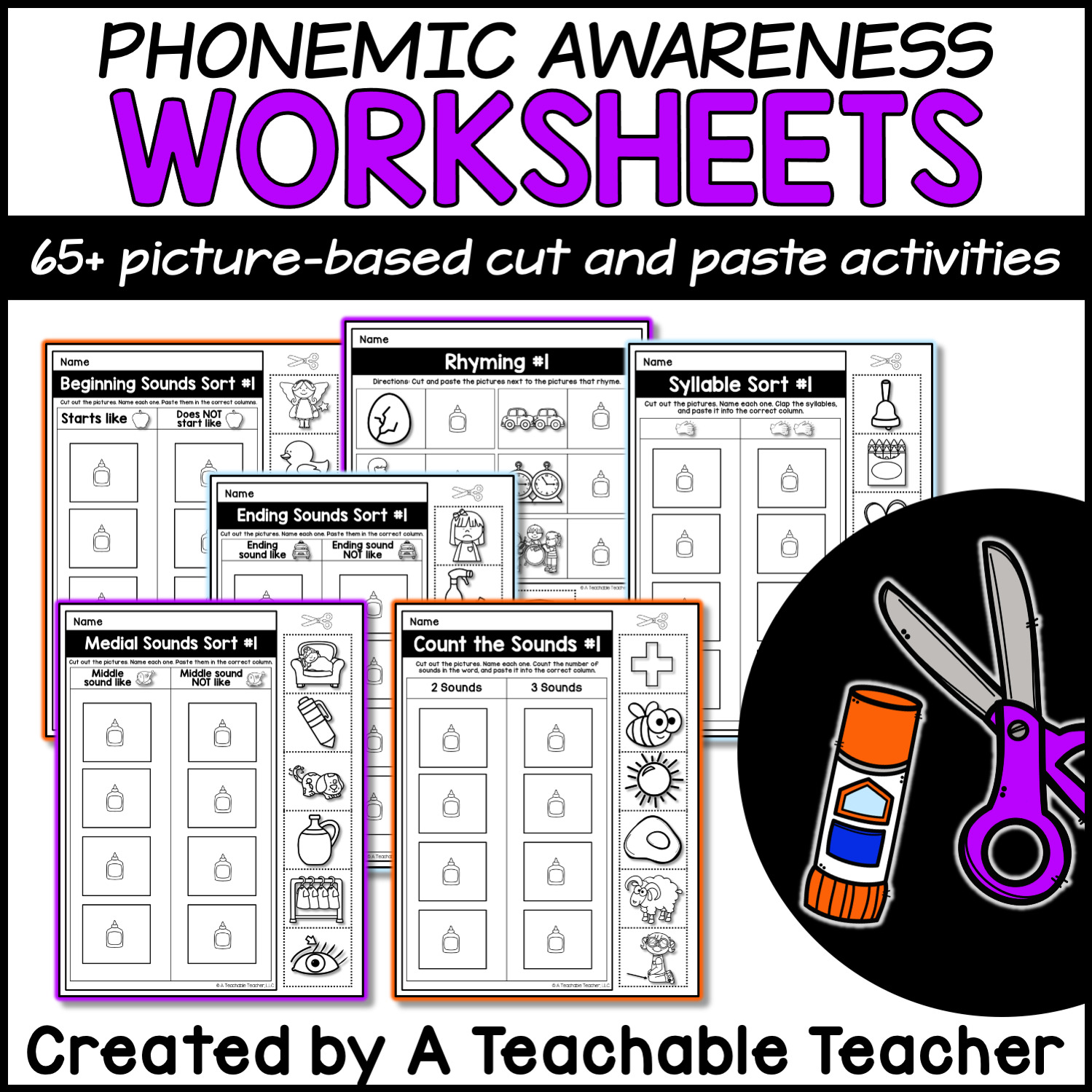
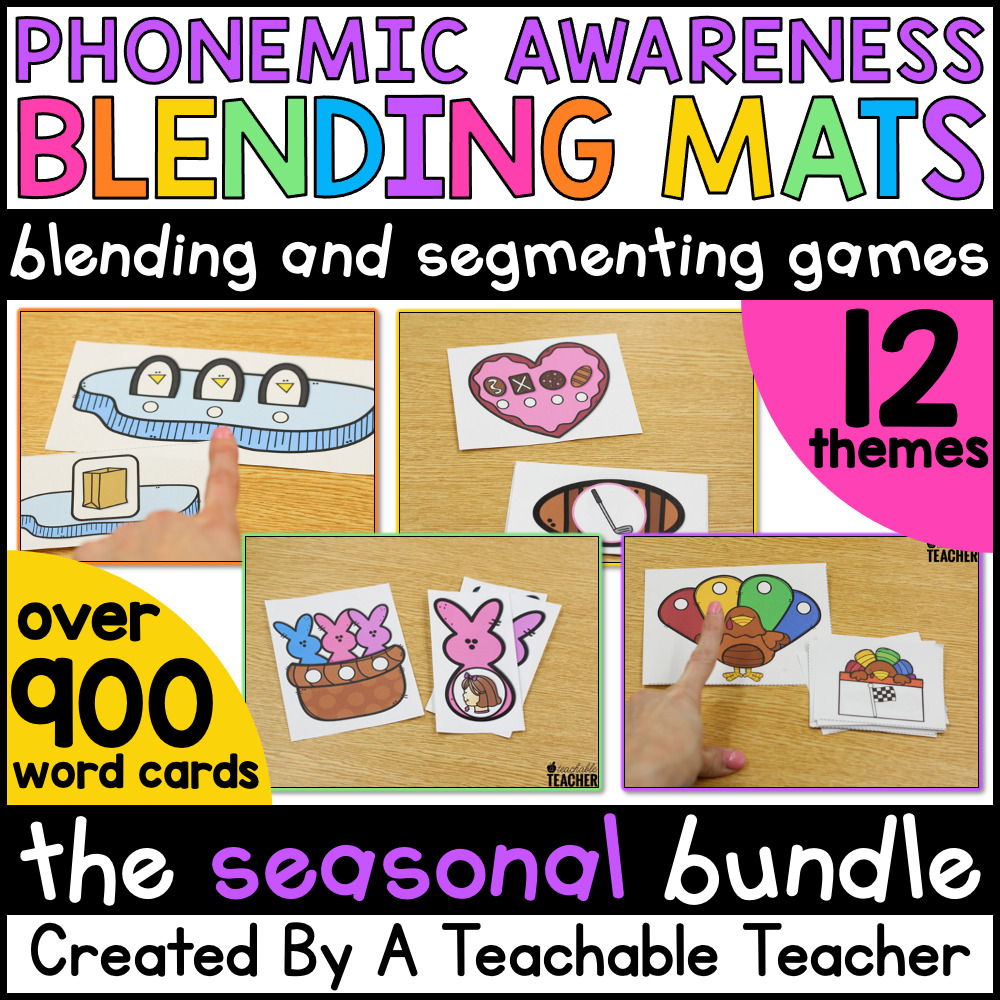

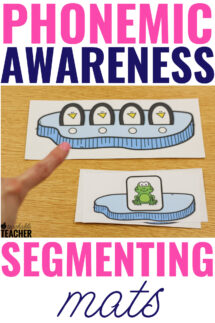
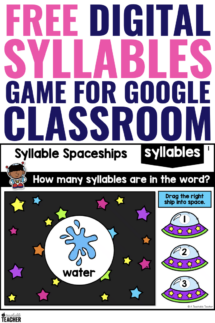

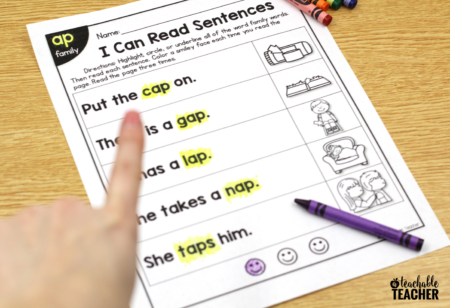
I would just like to say wow! You have provided such rich content in this post !! Thank you fir the careful research time and effort you have put in to this. It is just loaded with information!!
I live in Scotland and will be starting with a Primary 1 class this year ( they are 4 turning 5 I think this is the same as your Kindergarten)
Before beginning direct teaching of sounds I wanted to build up their phonological awareness ( I hope I have used the correct term!) Do you have any game suggestions or products specific for this early stage?
Many thanks
Shirlley
Hi Shirley,
Thank you for your kind words!
This link to my blog will show you ALL of the blog posts related to that category. I have linked free and paid videos, songs, games, activities, etc. that will build both phonological and phonemic awareness in your students.
https://www.ateachableteacher.com/phonemic-awareness/
This set of Teacher Task Cards will take your students through the entire process mentioned in the post. All you need to do is read the card to them. They will think it’s a fun “game” of words, but doing that for just a few minutes a day will make a huge difference!
https://www.ateachableteacher.com/downloads/phonemic-awareness-teacher-task-cards-2/
I hope that helps!